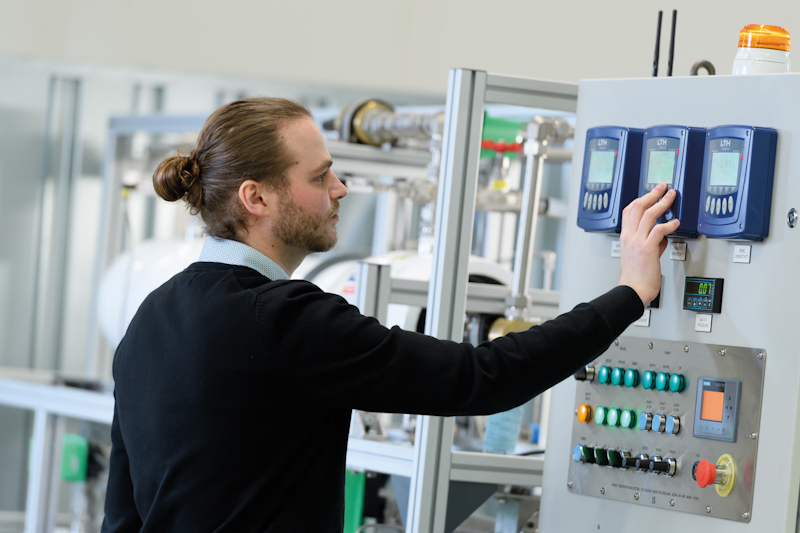Mobile wastewater purifier halves energy use
A portable, batch reverse-osmosis (RO), water purification technology reportedly uses at least 50% less energy than other methods and typically purifies more than 95% of wastewater.

Salinity Solutions, a University of Birmingham, UK, spin-out company, explains how its RO technology allows water to be purified through a semi-permeable membrane under pressure.
Batch RO improves the efficiency using a pressure exchanger and recirculates the feedwater over the membrane in a sealed loop.
Tim Naughton, Co-founder and Chief Technical Officer at Salinity Solutions, says, 'Using this method, we can desalinate, concentrate or purify water to very high recovery rates in a way that is at least 50% more energy efficient than traditional RO systems.'
The patented system uses a pressure exchange vessel to reduce the average pressure and maintain a minimised pressure drop along the membrane. This vessel maximises the system efficiency by preventing energy being wasted during operation, saving up to 70% of the energy than conventional systems.
The recirculation pump and unique valve arrangement maintain flow around the system to deliver recovery rates from 85-99%. The team explains that the technology has been developed into a modular system, is configurable to high and low pressures, is compact and can be solar powered (24V DC).
'Employing conventional membranes, the process cycle reduces membrane scaling and fouling which is typically found in other RO systems. The technology requires less pre-treatment than traditional RO and its high recovery ratio reduces the need for downstream treatment, e.g. evaporation. The configuration also allows for a smaller footprint, potentially a quarter the size of competitors,' adds Naughton.
'The technology is a process innovation. It uses 95% conventional RO system components in a smaller format – combined with lower service and energy costs, this ensures a lower total cost of operation.'
More energy is saved as the scale increases. Naughton says, 'Our first product, the SAM50 (50bar), is set up to treat low flows for industrial use of around 25m³ per day, however, we are in the process of scaling the system for municipal customers who need to treat thousands of m³ per day.'
The 50bar system is currently based out of Salinity Solutions’ Coventry headquarters, while a second 120bar (SAM120) system is based at the University of Birmingham. 'Both products are mobile and being made available to customers for field trials,' says Naughton.
Naughton co-developed the technology while studying Mechanical Engineering at Aston University. This is when he met his collaborator Professor Philip Davies, (now Professor at the University of Birmingham).
He believes that 'adoption of this technology will have a major impact in every corner of the globe' – from rural drinking water to large industrial processes.
The invention was inspired by demand for freshwater increasing while the world’s supply is steadily decreasing. Only 0.5% of the Earth’s water is in the form of available fresh water.
Government grants of £3mln were provided, while the initial funding for the spin-out came from an angel investor. Since then, investment has come from within the team, the University of Birmingham, friends, family and crowdfunding.
Naughton says, 'Crowdfunding was first chosen because of the compelling human story of the technology and to raise awareness of the project.' To date £1.5mln has been raised.
The first commercial application is scheduled to go live in April with a European automotive parts manufacturer.







